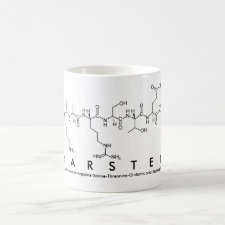
Authors: Kunath S, Marchyk N, Haupt K, Feller KH
Article Title: Multi-objective optimization and design of experiments as tools to tailor molecularly imprinted polymers specific for glucuronic acid.
Publication date: 2013
Journal: Talanta
Volume: 105
Page numbers: 211-218.
DOI: 10.1016/j.talanta.2012.11.029
Alternative URL: http://www.sciencedirect.com/science/article/pii/S0039914012009617
Abstract: We present a multi-objective optimization of the binding properties of a molecularly imprinted polymer (MIP) which specifically binds glucuronic acid (GA). A design of experiments approach is used to improve four different parameters that describe the binding properties of the polymer. Eleven different methacrylamide-co-ethyleneglycol dimethacrylate polymers imprinted with GA were synthesized according to a full factorial experimental design plan with 3 influencing factors (degree of cross-linking, molar equivalent of monomer to template and initiator concentration). These polymers were characterized by adsorption of the radiolabeled target analyte in methanol:water 9:1. The binding parameters were computed to optimize the polymer composition, taking into account four objective variables: the maximum binding capacity at high (Bmax) and low (B2) analyte concentrations, the equilibrium constant K50, and the imprinting factor (IF, binding to MIP/binding to NIP). With the multi-objective optimization method based on a desirability approach the composition of a twelfth "ideal" polymer could be predicted. This predicted polymer with highest "desirability" was synthesized with a composition of 0.65 mol% of initiator and a 1:4:20 ratio of template:functional monomers:cross-linker (T:M:X) (80% of cross-linking), and found to be the overall best MIP. Improvements over the original starting polymer were a 6 times lower K50, which corresponds to higher affinity, 20% higher capacity at low analyte concentration (B2), 40% higher capacity (Bmax) and 1.3 times increased imprinting factor (IF). Binding assays were also performed in aqueous solvents. Good binding properties were obtained in pure water with an imprinting factor of 3.2. Thus, this polymer is potentially applicable to biological samples like urine where glucuronides occur
Template and target information: glucuronic acid, GA
Author keywords: Multi-objective optimization, design of experiments, Molecularly imprinted polymers, Glucuronic acid



Join the Society for Molecular Imprinting

New items RSS feed
Sign-up for e-mail updates:
Choose between receiving an occasional newsletter or more frequent e-mail alerts.
Click here to go to the sign-up page.
Is your name elemental or peptidic? Enter your name and find out by clicking either of the buttons below!
Other products you may like:
 MIPdatabase
MIPdatabase









